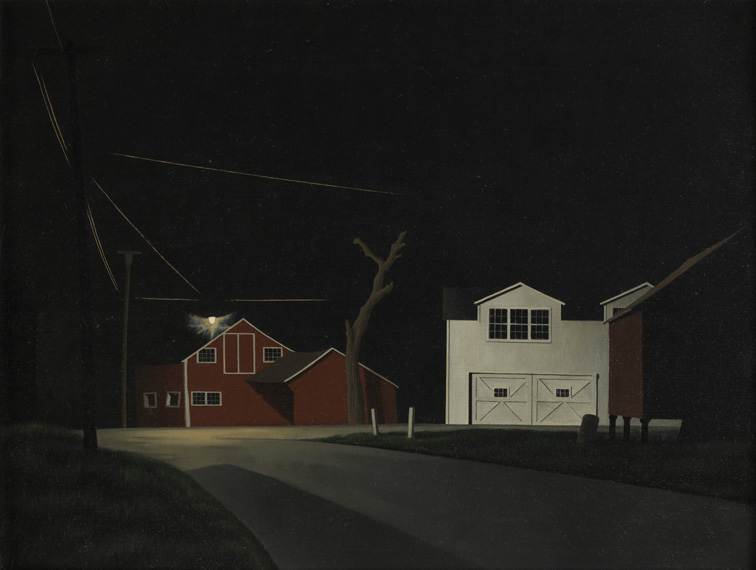
Black Night: Russell's Corners
George Copeland Ault
Ohio-born George Ault painted the world around him with a quiet grace and an air of melancholy that may reflect his troubled, reclusive life. Often linked with Precisionist painters such as Charles Sheeler, Ault's geometric architectonic studies are more subjective, even mysterious, showing the influence of his most admired artist, Albert Pinkham Ryder. The stillness and sense of solitude in his work have led to comparisons with Edward Hopper but seem more in line with the Surrealists, particularly Giorgio de Chirico, another of Ault's major influences. Ault was equally informed by American folk painting, a style he explored despite his extensive formal training in London.
Beginning in the 1920s, when his work focused on urban architecture, Ault had been a presence in New York City art circles. He suddenly left this milieu behind in 1937, when he moved to the rural community of Woodstock, New York. "Black Night: Russell's Corners" is the first in a series of four contemplative nocturnes depicting an intersection near Ault's Woodstock studio. Ault often studied the interplay of the stable, blacksmith shop, barns, and overhead wires near Russell's Corners. In "Black Night," as many of his works, the brilliant illumination of the darkness by a single light source speaks of Ault's ability to uncover the sublime in the most prosaic settings.
Artist
Date of Birth
(1891-1948)
Date
1943
Medium
Oil on canvas
Dimensions
18 x 24 1/16 in. (45.72 x 61.11875 cm.)
Accession #
1946.3
Credit Line
John Lambert Fund
Copyright
© artist or artist's estate
Category
Subject
More by
We're so excited you're planning to visit PAFA!
Make time for art — visit us Thursday to Sunday.
Before reserving your tickets, please review helpful information about museum hours, accessibility, building access, and special admission programs.
If you have any questions, feel free to reach out to us at visitorservices@pafa.org — we’d love to help!